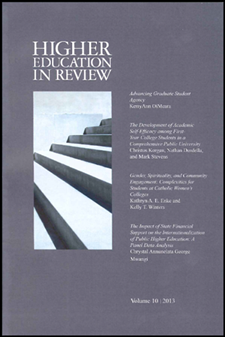By Justin Ortagus, The Pennsylvania State University President Obama recently unveiled a plan that would tie federal aid to a college ratings system. The fact sheet provided by the White House outlines the general plan to rate higher education institutions based on the following performance measures:
Although it’s far too early to
label Obama’s college ratings proposal a patent failure or success, one fact is
unavoidable: the magic is in the metrics.
In order to add insight and explicate concerns pertaining to the college
ratings system, I will examine select challenges through the lens of a used car
lot. Perceptions of PrestigeWhy does a BMW typically cost more than a Toyota? Consumers pay a premium for the perception of prestige. Since most people don’t profess to be automotive experts, we often rely on the sticker price to serve as an informal indicator of a car’s quality. Colleges and universities work in a similar way. Even if an institution’s U.S. News & World Report ranking drops, its tuition usually increases for the same reason consumers pay a premium for luxury cars: the price of a product is viewed as an informal indicator of its quality. To lower tuition would be to signify a drop in academic quality. Since Obama’s college ratings system is intended to assess value and inform policy, it should be distinct from U.S. News & World Report’s rankings. Despite claims to the contrary, the general college ratings plan proposed by the White House has metrics that overlap with U.S. News & World Report’s rankings data and could serve to offer further advantages for already advantaged institutions. Sticker Price vs. Net Price
Each college or university, much like a used car, has a sticker price. When consumers enter a used car lot, they often negotiate the sticker price and end up paying a net amount much lower than the advertised price. For low-income students, tuition represents a sticker price that should mean little when considering the net cost of higher education. Specifically, elite higher education institutions with large endowments would be able to offer more generous student aid packages in order to skim from the highest achieving low-income students and subsequently improve their college rating. The manner by which the college ratings plan evaluates affordability has yet to be explained in detail, but distinctions between sticker price and net price complicate the issue and make it increasingly difficult to evaluate institutions with wide variations in the size of their endowment. Although the college ratings system is advertised as a boost to higher education institutions willing to promote innovation or cut the price of tuition, decreases in state funding have forced many effective non-elites to rely upon tuition in order to survive. The (yet-to-be-released) details of these data are paramount in determining the effectiveness of the college ratings plan. Deceptive PracticesThe pay structure of a used car salesman incentivizes the optimization of net profit by any means necessary. Since the customer’s best interest is not aligned with the salesman’s ability to acquire resources, deceptive practices often occur. Undesirable behaviors are typically explained by the reward structures in place. A variety of reward systems have been found to incentivize certain behaviors despite hoping for an alternative behavior. In higher education, high stakes college rankings offer incentive for colleges and universities to provide misleading data in order to improve their annual ranking. For instance, Emory University recently disclosed its consistent misreporting of institutional data. In hopes of achieving a higher ranking, the admissions and institutional research offices at Emory exaggerated the average SAT and ACT scores of its students. Additionally, several law schools have faced legal action in response to misleading claims and statistics related to graduates’ job placement, average student debt, and average salary. The reasoning for altered data is simple: higher education institutions in question are dependent on the resources associated with improved performance. Since Obama’s college ratings system could dictate federal aid and indirectly affect enrollment patterns, it would have considerable power over many higher education institutions. When tied with critical resources, the power associated with a college ratings system has the ability to force an institution to do something it wouldn’t do under different circumstances. As a result, regulation measures of reported institutional data are paramount when considering future legislation pertaining to tying federal resources to college ratings. The Task at HandSimply put, the devil is in the
details. Many would agree with those who
claim the current financial model in higher education is unsustainable, but
it’s important to think critically about challenges and implications associated
with metrics to be used when rating colleges and universities. While the promotion of innovation in higher
education appears to be a positive development, several questions related to federal
performance funding remain underdeveloped or completely unaddressed. Justin Ortagus is a Ph.D. candidate in the Higher Education Program at the Pennsylvania State University. He received his
B.A. in English and M.Ed. in Educational Leadership from the University
of Florida. Justin's research interests revolve around issues
related to college rankings, online education, and the cost crisis in
higher education. He currently works with Dr. John Cheslock and Dr. Fred Loomis as a
graduate assistant for Penn State's graduate certificate program
in Institutional Research. |
|
HER-O >
The Difficulty in Data: A Look at How Used Car Lots Can Help to Explain Challenges Facing Obama’s College Ratings Systemposted Sep 23, 2013, 7:14 PM by Frank Fernandez [ updated Nov 8, 2013, 12:15 AM ] |
